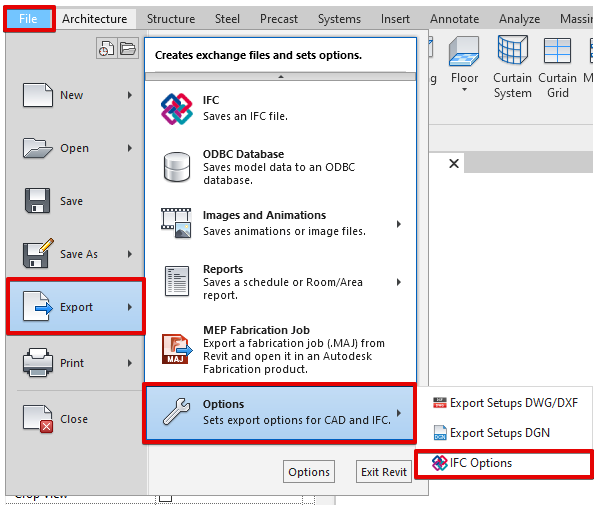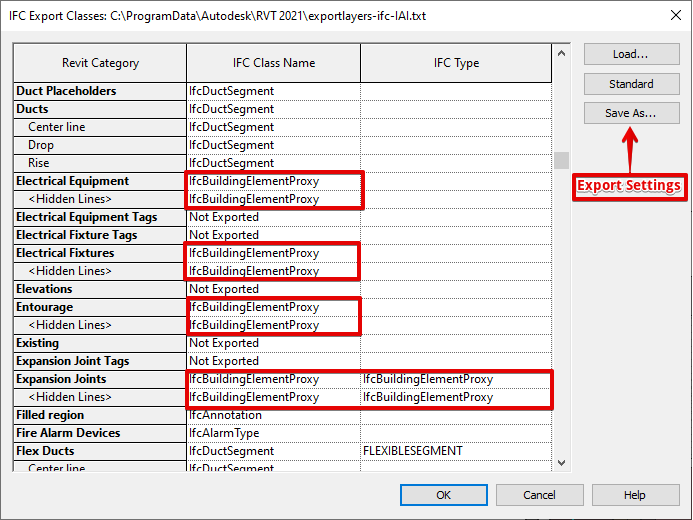Updated to provide further clarification – 17/08/21
The problem with IFC files is that tThe problem with IFC files is that they are often not set up correctly at the start and many category element translations are set to a default value, IfcBuildingElementProxy. This default output does not contain element type specific properties and can give you an output which does not meet the needs of the project or exchange.
Although Revit has an inbuilt tool to allow the export of IFC file types, the options to set this export up in the first place can be a little less obvious. Within the File tab in Revit, scroll down to the bottom of the Export selection and you will find an Export Options are which contains IFC Options.

By selecting this IFC Options button a dialogue box will provide you with a list of Revit categories and as default settings many of these will be set to IfcBuildingElementProxy. These should be modified to suit the IFC Entity category for the required elements in the IFC exchange and those settings should also be saved for reuse on future projects or on other team members machines.

To select the correct entities for the categories, this should be done utilising the buildingSMART IFC database suitable for the version of IFC export you are using (IFC2x3 or IFC4). IfcBuildingElementProxy contains a default basic property set and should be used to exchange special types of building elements, for which the current IFC Release does not yet provide a semantic definition. Additional parameters can be added but will not be included as part of the export without intervention on your model.
Further to this you may want to apply element specific IFC entities where, especially when dealing with broad Revit categories such as Mechanical Components, you may need to specify element IFC types or sub categories (enumerations) using IFCExportAs and IFCExportType parameters at the Type level of a family.
Using both the IFC options dialogue and the element parameters will allow you to be more specific about the IFC export and avoid the use of IfcBuildingElementProxy and utilise entities which contain suitable property sets for your IFC exports.
Man and Machine offer a more detailed course focusing on IFC files, deliverables and settings as well as the theory and use of IFC and BCF on our IFC Fundamentals course.
Should you require further details on Revit training on IFC tools or outputs for project delivery and model creation, then please contact the team at Man and Machine for further help.
For more information on this blog post or if you have any other questions/requirements, please complete the below form:
